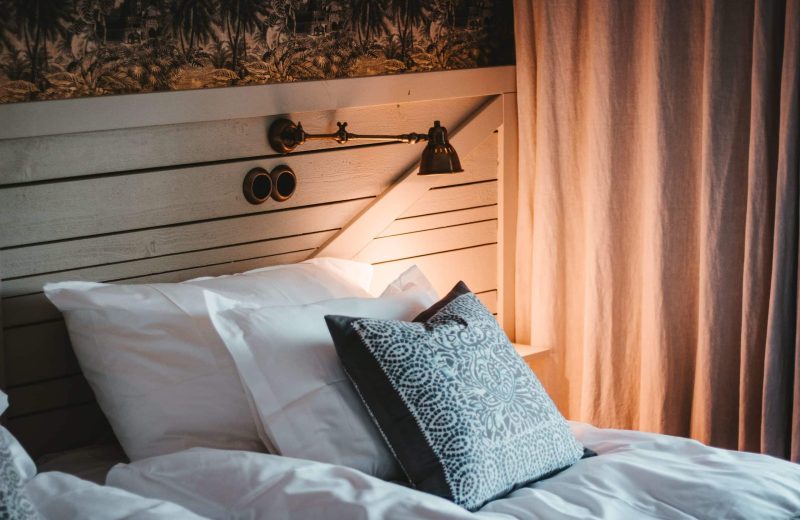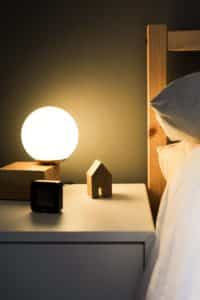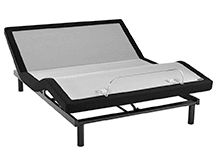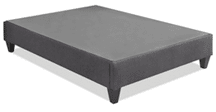
The phrase “bedtime routine” can be considered a set practice for young children. A bath, a bedtime story, and a cozy sleeping space are luxuries that adults don’t always take the time to enjoy. Bedtime routines are almost more important for adults than children, though.
Winding down after the day and preparing the body for sleep is a critical part of getting a whole night of rest. Skipping a bedtime routine could be part of why 1 in 3 adults aren’t getting enough rest and why millions of Americans develop chronic disorders after years of sleep trouble.
Sleeping is nearly as important as breathing, eating, and hydrating. It regulates our bodies by improving brain function, immunities, the nervous system, cardiac health, and overall life expectancy. Even so, there are thousands of factors that make it challenging to achieve the amount of sleep our bodies need. Researchers have studied the impact of poor sleep for years and commonly find that a lack of sleep, especially in older adults, leads to:
There are many other sleep-related issues and many possible causes. While some professional treatments are available, researchers recommend addressing the issues independently. They advise prioritizing sleep hygiene and the behavioral and environmental aspects contributing to quality sleep. Part of sleep hygiene is a solid bedtime routine.
Nighttime routines are fantastic ways to prepare your brain and body for a night of restful sleep, and each person should try curating their own. The perfect routine reflects an individual’s needs, wants, schedule, and environment. There are activities that commonly work, though. Test these actions as you map out the perfect sleep formula.

Reading is also a strategic way to relax and reflect. Try a book that is low in suspense or energy to keep the mind and heart relaxed. The location and duration can vary by the reader. The goal is to slow down and prepare for the night.
Meditation helps unload stress, slow the heart rate, and calm the body. This can be professionally guided practice with videos, podcasts, app recordings, or any other solution. It can also be internally guided. Intentional breathing and mindfulness are one of the most primal ways to tell your brain to relax the body.

Relieve tension in the body before bed with gentle movements like stretching, body rolling, or even yoga practice. Try working the hamstrings, shoulders, and lower back, all areas that are heavily pressured during the day. Loosening these areas prevents soreness or cramping during the night and releases tension or stress held in the muscles and bloodstream.
Body rolling is rubbing different parts of the body with round tools, sometimes foam, plastic, or even marble, to cleanse muscles and increase blood flow.
As you go through the nighttime routine, put on a relaxing playlist. Psychological studies show how music can influence brain activity, especially during sleep. In one study, 62% of participants said music helped them fall asleep and stay asleep through the night. The type of music varied. Participants used music from 14 different genres and more than 500 artists. The right music to listen to depends on personal preference, so try other options and see what works best for you.
Another sound that can help sleep isn’t actually music, mostly just noise. Color noises use different frequencies to interact with the brain. Try pink or brown noise, which resembles soothing noises from nature. Similar to music, though, the best option depends on personal preference.
Temperature is one of the most effective ways to prepare the body for rest. A warm bath or shower can slow the heart rate and loosen the muscles. Especially when paired with certain scents like essential oils or sounds like a calming bedtime playlist. Time in the tub or shower sets the stage for a night of rest.
Certain drinks are naturally designed to help the brain release hormones and other messages to trigger rest in the body. Different drinks will respond to various bodies, so it is essential to test out what you enjoy. Drinks that commonly help the body wind down include chamomile or lavender tea, milk, juice, or warm water.
People often associate alcohol with falling asleep, but alcohol can cause sleep issues or disorders. Alcohol is a depressant that slows the central nervous system, making the heart beat slower and the eyes feel heavy. The effects are temporary, though, and will wear off after the alcohol filters through the liver and leaves the bloodstream. The nervous system then speeds back up, and the body wakes, even midway through a sleeping cycle. This offsets the natural pattern and makes it much harder to get quality sleep the rest. The drinker will likely not be fully rested in the morning.
Alcohol in moderation is manageable, but try avoiding it within a few hours before bedtime.
A late-night snack can also help the body rest. An empty, hungry stomach will prevent the brain from sending the hormones necessary for sleeping. On the other hand, an overly full stomach can also distract the brain. It will focus on digestion instead of rest. Listen to your body to find the best balance between the two. If you do need a bedtime snack, only eat healthy and whole foods that are easy to break down. Things like cherries, grapes, kiwi, rice, or nuts are all known to promote sleep.
Arguably the most notable step to prepare for bed is to turn off the screens. The light emitted from televisions, phones, tablets, or other devices keep the brain alert. This quickly disrupts the sensitive time between awake and asleep, which is why it is best to avoid it up to two hours before bedtime. Instead of falling asleep to the tv or social media, read a book, journal, meditate, or do any other actions above.

Darkness tells the brain to release chemicals that trigger rest and comfort in the body. This natural response happens in alignment with the body’s circadian rhythm, which regulates sleeping and waking time. Be sure to dim harsh lights and try only using warm and soft lamps or even candles.
Cool air also calms the body and promotes healthy sleep cycles. Research finds that the body responds to a warm environment with a higher heart rate and alertness, meaning heat can disrupt the sleep cycle. Colder temperatures are better for sleep, ideally between 60 and 68 degrees Fahrenheit. Remember, though, it is essential to find the right balance for your body.
There are many actions to incorporate into a quality bedtime routine and dozens of tools that contribute to an effective sleeping environment. Arguably the most critical item, though is a high-quality, personally selected mattress.
A mattress that fits your space, body type, and other needs can determine if you reap the benefits of rest and recovery or if you will continue losing critical hours of rest. Turn to the experts with Mattress World Northwest. Our professional team helps you find the best mattress to suit your needs at the right price for your budget. We are available at any of our 16 showrooms. Come visit us today!
Check out our online shop, too, where we’ve shared extensive details of all our inventory. We also offer further research, recommendations, and expert knowledge on developing vital sleep hygiene and a healthy bedtime routine.
While you can't go wrong with any of our mattresses, here are a few factors you'll want to consider before making a purchase: your sleep position (and if you have a partner, theirs as well), the size of the space, and a price point. If you have any questions, rest easy knowing that our team is happy to help you find that perfect fit.
| Size | Dimensions |
|---|---|
| Twin | 38″ wide x 75″ long x 9.25″ tall |
| Twin XL | 38″ wide x 80″ long x 9.25″ tall |
| Full | 54″ wide x 75″ long x 9.25″ tall |
| Queen | 60″ wide x 80″ long x 9.25″ tall |
| King | 76″ wide x 80″ long x 9.25″ tall |
| Cal King | 72″ wide x 84″ long x 9.25″ tall |
| Split King (2pk) | 38″ wide x 80″ long x 9.25″ tall |
Mattress World Northwest makes it easy to choose the right foundation for your space and lifestyle.



Reliable support for your boxspring and mattress.
